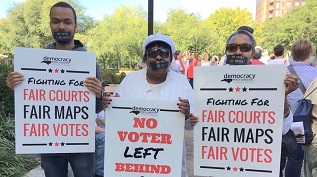Both/and Investing: Doing Well AND Doing Good

Editor’s Note: This blog post originally appeared here.
Lately we find ourselves asking how we can be better supporters of our grantee partners, who are working in increasingly difficult circumstances to advance social and economic justice across the South. With rapid expansion of income inequality, the gradual erosion of public goods and outright attacks on families’ safety and dignity, their work is more important than at any point in recent history. The Foundation, our partners and the communities we care about are at a critical juncture and “urgency” is the operative word.
Fortunately, the Babcock Foundation board and staff now have the flexibility to consider increased grantmaking opportunities just when they are needed most. After years of planning and research, 2017 marked the first complete year MRBF’s portfolio was 100 percent invested in a mission-related strategy guided by environmental, social and governance (ESG) criteria. These ESG screens require best practices in labor rights, climate impact, natural resource use, corporate governance, supply chain management, community impact and other factors. Not only was the portfolio’s return up more than 20 percent last year, but every asset class outperformed its respective benchmark and achieved ESG impact. The timing of these market gains could not be any better, and we’re committing additional resources to our partners throughout the region.
One primary focus is our democracy and civic engagement pathway. With the 2018 midterm elections within sight and the 2020 census on the horizon, our grantee partners are working diligently to hone their communications capacities, develop issue alignment within their networks, register and educate voters, create grassroots community organizing initiatives and employ many more strategies toward a more participatory democracy. Some of our partners are immigrant-serving organizations doing protection work amid heightened fears of raids, deportations and harassment. Others are developing leaders within communities, holding public officials accountable and building trust ahead of the census. Our ESG investment portfolio is enabling us to give all these strategies a boost without burdening our partners with extra red tape.
The commonly accepted, traditional investment mantra used to be that financial return was generated independent of socially responsible ESG considerations. It was either/or: Either you invested strictly for return and didn’t pursue ESG outcomes, or you invested for social and environmental good and accepted a diminished return. Not anymore. ESG-oriented portfolios do generate competitive returns while providing beneficial impacts. Along the way, several investment management practices have evolved: research methods, due diligence practices, managerial philosophy, ESG investment opportunities, evaluation metrics and many more. There is also an increased emphasis on hiring investment management firms led by women and people of color, even while there is much more work to do.
Bottom line: The IRS requires foundations to spend five percent of their endowments. We asked, what about the other 95 percent? Why not explore strategies that allow us to leverage more of our assets to achieve greater impact and positive outcomes toward our mission?
If you’re interested in learning more about our investment strategies, head to the mission investing section of our website, or read our ESG guidelines and PRI policy. Other resources that have been helpful to us as we developed our approaches are the Mission Investors Exchange and Confluence Philanthropy, networks for foundations and others dedicated to deploying capital for social and environmental impact.
Both/and investing works!
